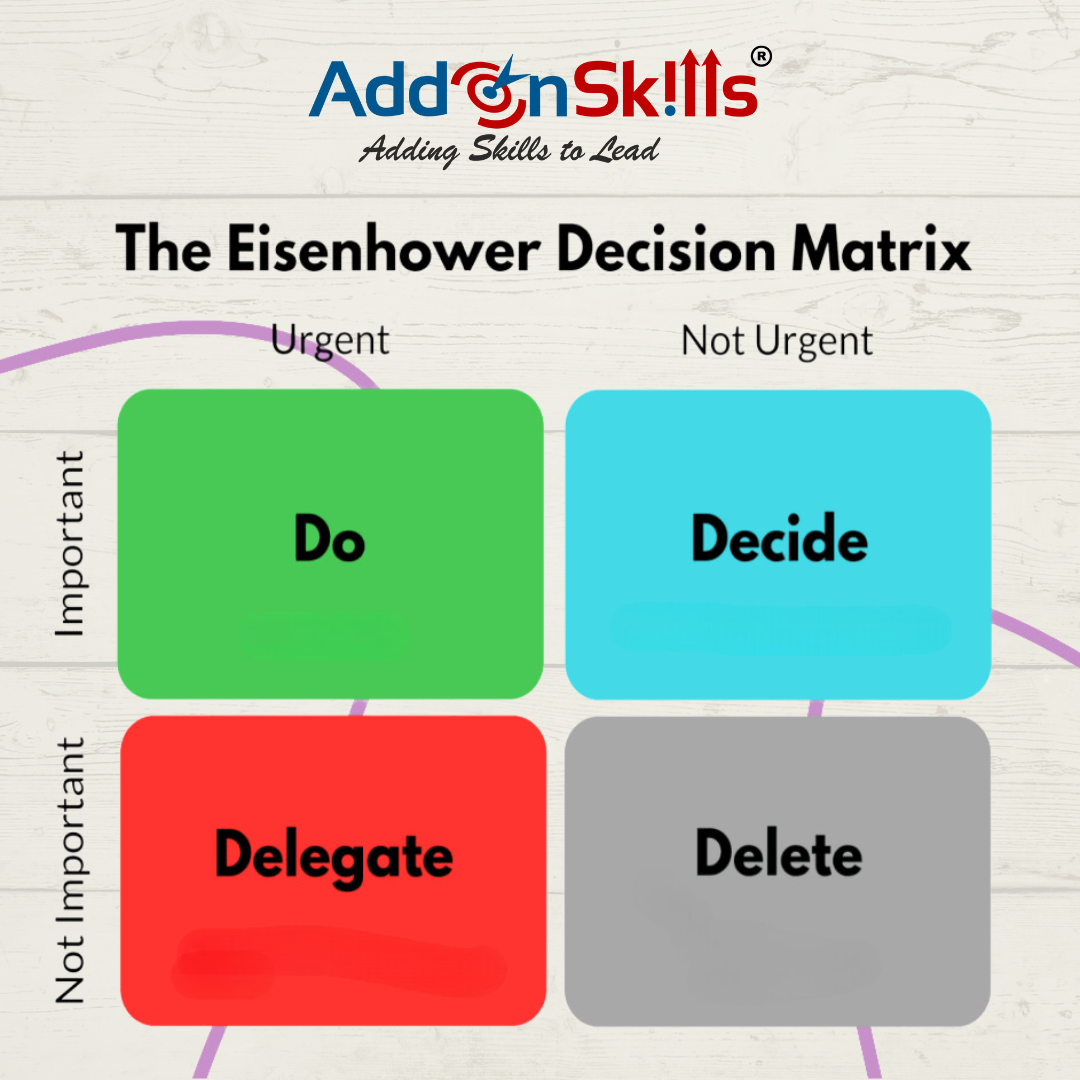Introduction
In the fast-paced world of program management, it's easy to feel overwhelmed by the sheer volume of tasks demanding your attention. From stakeholder meetings and progress reviews to risk assessments and issue resolution, the to-do list can seem never-ending. How do successful program managers stay on top of their game and ensure their programs deliver value?
The answer lies in prioritizing program activities effectively. In this article, we'll explore the power of prioritization using the Eisenhower Decision Matrix and how it can transform your approach to program management.
Understanding the Eisenhower Decision Matrix
The Eisenhower Decision Matrix is a powerful tool that helps you categorize tasks based on their urgency and importance. Named after Dwight D. Eisenhower, the 34th President of the United States, this matrix is a simple yet effective way to prioritize your activities and focus on what truly matters.
The matrix is divided into four quadrants:

- Do (Urgent and Important)
- Decide (Important but Not Urgent)
- Delegate (Urgent but Not Important)
- Delete (Not Urgent and Not Important)
Applying the Eisenhower Decision Matrix to Program Management
Let's delve into how you can apply this matrix to your program management tasks:
1. Urgent and Important (Do Immediately)
Tasks in this quadrant require your immediate attention and are crucial for the program's success. These activities are often time-sensitive and have a significant impact on program outcomes.
Examples:
- Developing and refining the program business case.
- Resolve critical issues endangering program benefits realization.
- Provide immediate updates to the program steering committee on strategic changes and critical developments.
- Conducting assessments to realign program goals with changing customer requirements.
- Reallocate resources to address critical needs or shortages.
Action: Focus on these tasks as your top priority. Allocate sufficient time and resources to handle them effectively.
2. Not Urgent but Important (Schedule for Later)
These tasks are essential for the long-term success of the program but are not time-sensitive. They contribute significantly to achieving program goals and objectives.
Examples:
- Building and maintaining relationships with stakeholders.
- Conducting program reviews and lessons learned sessions.
- Implementing best practices and process improvements.
- Enhancing team skills through workshops and training sessions.
- Ensuring adherence to governance frameworks and standards.
Action: Schedule dedicated time slots for these activities. Ensure they are consistently part of your weekly or monthly agenda to maintain steady progress.
3. Urgent but Not Important (Delegate)
Tasks in this quadrant require immediate attention but do not necessarily need to be handled by you. Delegating these activities allows you to focus on more critical aspects of the program.
Examples:
- Scheduling regular team meetings, reviews, and stakeholder briefings.
- Sending out routine updates and notifications to stakeholders.
- Updating and managing document repositories and collaboration platforms.
- Preparing agendas and distributing materials for upcoming meetings.
- Communicating with vendors and external partners for routine inquiries.
- Gathering data and inputs from various team members for reports and analysis.
Action: Identify capable team members who can take on these responsibilities. Provide clear instructions and expectations to ensure smooth execution.
4. Not Urgent and Not Important (Eliminate)
These tasks neither contribute to the program's success nor require immediate attention. Eliminating or minimizing time spent on these activities can free up valuable resources for more impactful work.
Examples:
- Attending meetings that do not add value to the program.
- Engaging in activities that do not support program goals.
- Engaging in prolonged email chains with minimal outcomes.
- Providing feedback on tasks that are not within your scope of responsibility.
- Focusing on cosmetic changes rather than substantive improvements.
Action: Critically assess and eliminate these tasks from your to-do list. Focus on activities that align with your program's strategic objectives.
Practical Steps to Implement Prioritization
- Create a Task List: Begin by listing all the tasks and activities associated with your program. This comprehensive list will serve as the basis for prioritization.
- Categorize Tasks: Use the Eisenhower Decision Matrix to categorize each task into one of the four quadrants. Be honest and objective in your assessment.
- Allocate Time: Allocate time and resources based on the priority of each quadrant. Ensure high-priority tasks receive adequate attention and support.
- Review and Adjust: Regularly review your task list and priorities. Program dynamics can change, and it's essential to adjust your focus accordingly.
- Communicate Priorities: Communicate your priorities clearly to your team and stakeholders. Ensure everyone understands the rationale behind your decisions and the focus areas.
Benefits of Prioritizing Program Activities
- Enhanced Focus: Concentrate on activities that drive program success.
- Improved Time Management: Allocate time and resources effectively.
- Reduced Stress: Minimize overwhelm by tackling high-priority tasks first.
- Greater Efficiency: Streamline efforts and eliminate unnecessary activities.
- Better Outcomes: Achieve program goals and objectives more effectively.
Conclusion
Prioritizing program activities is a fundamental skill for successful program managers. By leveraging the Eisenhower Decision Matrix, you can transform your approach to managing tasks, ensuring that you focus on what truly matters. Implement this productivity hack to enhance your program management practices, reduce stress, and achieve better outcomes. Share this strategy with your program management community and watch your collective success soar.
That's all in this article. Once again, thank you for being part of this weekly newsletter series. I kindly ask for your continued support. Liking, sharing, and subscribing to this newsletter series is a simple yet powerful ways to show your appreciation. By doing so, you not only help me reach a wider audience but also contribute to building a thriving community of knowledge seekers and enthusiasts.
